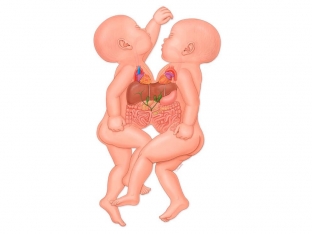Multiple pregnancies today is a fairly common occurrence. This means that during pregnancy, two fetuses develop simultaneously in a woman's body. Such a condition in most cases is genetically determined and can develop according to two main principles: as a result of the division of one fertilized egg or the simultaneous fertilization of two different eggs. Of course, pregnancy – it is always a joy for future parents, but in most cases, pregnancy with two fetuses is a surprise for them. What are the main risks for mother and fetus in case of multiple pregnancy – read on estet-portal.com.
Multiple pregnancies: what are the risks for the mother and future children
As you know, even pregnancy with one fetus is a big burden for the mother's body. During this period of life, a woman's body adapts to new conditions, as a result of which various unpleasant, and sometimes even dangerous situations can arise. Multiple pregnancy or pregnancy with two fetuses – this is a double burden for a woman whose body has to satisfy all the needs of two fetuses developing in it. Such a pregnancy, much more often than a singleton, can be complicated by various pathological conditions. There are increased obstetric risks for mother and child, both during childbirth and in the postpartum period.
Multiple pregnancies:
- major obstetric risks for mother and children with multiple pregnancies;
- what intrauterine pathologies can develop with multiple pregnancies;
- informative methods for diagnosing multiple pregnancy.
Key obstetric risks for mother and child with multiple pregnancies
In multiple pregnancies, the incidence of maternal and perinatal morbidity and mortality is almost 5 times higher than in singleton pregnancies.
The most important factors in the development of perinatal pathology in multiple pregnancies are the small weight of newborns, as well as miscarriage. The main obstetric complications that determine adverse maternal and fetal outcomes include:
- premature birth;
- premature and early rupture of amniotic fluid;
- umbilical cord;
- premature placental abruption;
- intrauterine infection of fetuses;
- fetal hypoxia;
- polyhydramnios.
What intrauterine pathologies can develop with multiple pregnancies
With multiple pregnancies, the risk of developing congenital malformations in children increases almost 5 times.
Polymultifactorial malformations are more often observed, which include non-closure of the hard palate and cleft lip, various anomalies in the development of the cardiovascular and nervous systems. Monozygotic twins are characterized by the occurrence of multiple or lethal defects. An important role is also played by the intrauterine location of the fetus, which you need to know to choose the tactics of childbirth. Very rarely, an extremely dangerous condition can occur during childbirth – clutching twins in the process of their expulsion. Quite rarely, such intrauterine pathology as conjoined twins is also diagnosed. Fruit fusion can occur in the head, chest, abdomen, pelvis and other areas. Such a pathology can be surgically corrected only in some cases, while it is extremely difficult to predict the survival of fused fetuses.

Timely diagnosis of multiple pregnancies is important, as it makes it possible to assess the existing risks, diagnose intrauterine pathologies and plan further management of such pregnancies and childbirth. To recognize a multiple pregnancy, one should be guided by a complex of special research methods and clinical signs. An increase in the size of the uterus that does not correspond to the gestational age may indicate the development of multiple pregnancies. During obstetric examination, it is possible to palpate small and large parts of the fetus, listen to the heartbeat in several places with different frequencies. However, the most informative method for diagnosing multiple pregnancy is ultrasound, in which it is possible to determine multiple pregnancy in its early stages in almost 100% of cases.







Add a comment